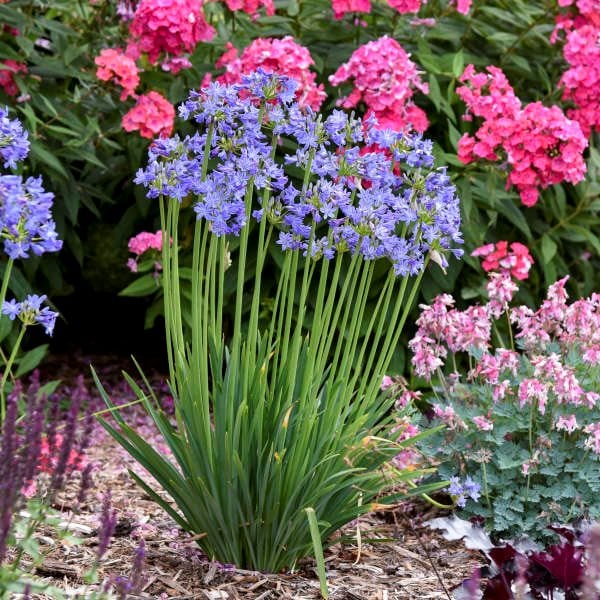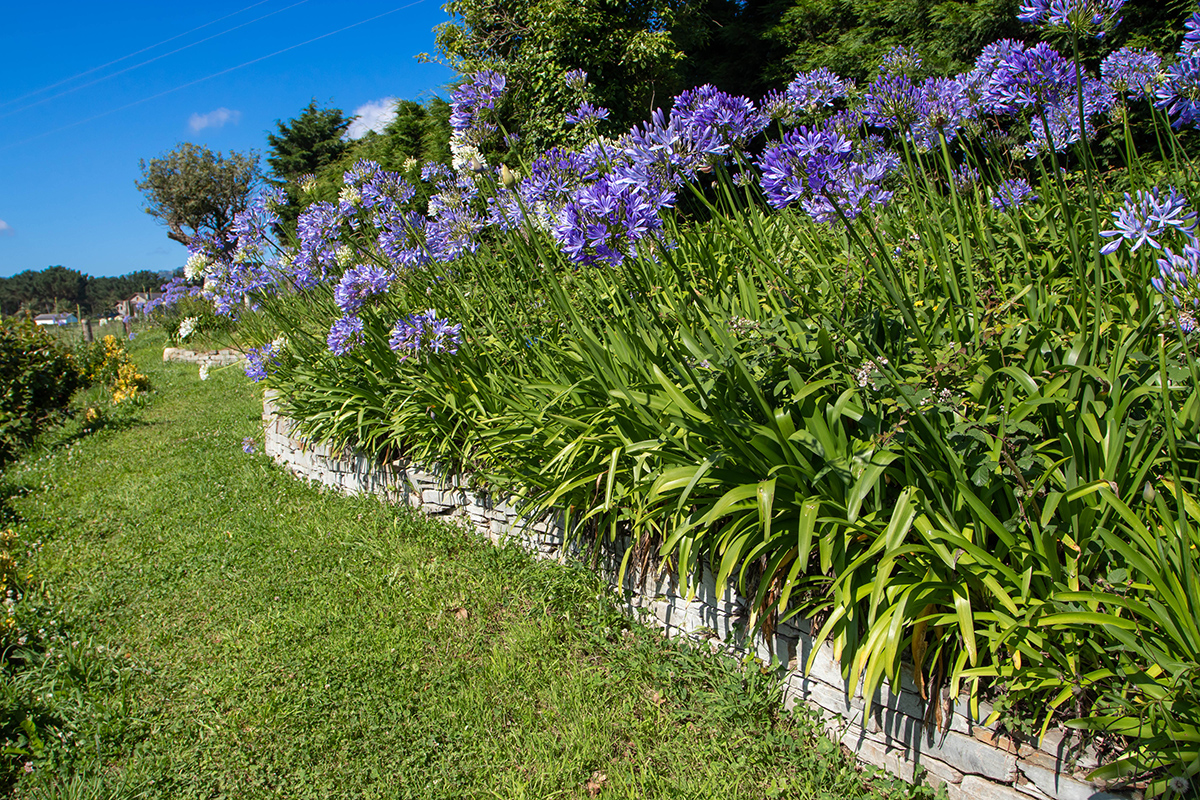Agapanthus Treatment Tips for Lush and Vibrant Flowers
Agapanthus Treatment Tips for Lush and Vibrant Flowers
Blog Article
Letting Loose the Secret to Effective Agapanthus Cultivation: Tips and Techniques for a Flourishing Yard
In the world of gardening, growing agapanthus efficiently needs a critical method that incorporates various elements of plant care. By recognizing the subtleties of agapanthus cultivation, one can develop an environment where these plants prosper and bloom generously.
Planting Agapanthus: Best Practices
When growing Agapanthus, proper soil prep work is necessary for making sure successful growth and advancement of these gorgeous flowers. Agapanthus, commonly called Lily of the Nile or African lily, flourishes in well-draining dirt with a slightly acidic to neutral pH level - Agapanthus. Prior to planting, it is crucial to amend heavy clay soils with raw material such as garden compost or peat moss to improve drain and supply essential nutrients for the plants
To plant Agapanthus, choose a location that gets full sunlight to partial shade, as this will advertise healthy and balanced development and abundant flowering. Dig a hole twice the diameter of the plant's root sphere and put the Agapanthus at the exact same depth it was previously growing. Carefully backfill the hole with dirt, pushing down strongly to get rid of any kind of air pockets around the origins.
Water the freshly grown Agapanthus completely and proceed to keep the soil evenly moist, especially during the plant's energetic expanding period. Agapanthus. Using a balanced plant food once a month can additionally sustain the plant's growth and flowering. By adhering to these ideal techniques for growing Agapanthus, you can produce a spectacular display screen of these exciting blossoms in your yard
Perfect Soil Conditions for Agapanthus
For optimal development and growing success of Agapanthus plants, making certain the dirt conditions are perfect is important. Agapanthus flourishes in well-draining soil with a somewhat acidic to neutral pH degree ranging from 6.0 to 7.0. This type of dirt permits sufficient water drainage, protecting against waterlogging which can bring about root rot. To boost soil drainage, take into consideration including raw material such as garden compost or peat moss when preparing the growing site. Moreover, Agapanthus favors soil that is rich in nutrients, so including a well balanced fertilizer during the growing season can advertise healthy and balanced development and vivid blooms.

Watering and Feeding Tips
To make certain healthy and balanced growth and dynamic flowers, correct watering and feeding strategies are essential my review here for successful Agapanthus growing. Agapanthus plants benefit from regular watering, especially during the growing season. It is recommended to water deeply as soon as a week, making certain the dirt is moist however not waterlogged. During heat or in pots, even more constant watering may be required to avoid the dirt from drying totally.
When it involves feeding Agapanthus, a balanced fertilizer with equivalent parts nitrogen, phosphorus, and potassium can be applied in the springtime to promote healthy growth and blooming. Slow-release plant foods are perfect for supplying nutrients gradually over an extended duration. Prevent over-fertilizing, as this can bring about too much vegetation growth at the expense of blooms.
Additionally, including raw material like compost right here right into the soil can boost nutrient levels and enhance soil framework, helping in the overall health of the Agapanthus plants. By adhering to these watering and fertilizing tips, garden enthusiasts can guarantee their Agapanthus plants thrive and generate spectacular screens of flowers.
Trimming and Deadheading Techniques
Correct pruning and deadheading strategies play a vital role in keeping the wellness and appearances of Agapanthus plants, matching the essential methods of watering and feeding for effective growing. Trimming Agapanthus involves removing invested blossom heads, yellowing or dead fallen leaves, and overall shaping of the plant to advertise much better development. pop over to this web-site Deadheading, the process of eliminating discolored blossoms, not only improves the plant's appearance yet likewise urges further flowering.
When deadheading Agapanthus, it is suggested to trim off the blossom stem at the base using sharp, clean shears. This procedure redirects the plant's energy from seed manufacturing back into root and vegetation development, promoting a healthier and extra durable plant. Regular deadheading can prolong the flowering duration of Agapanthus and stop self-seeding, which can lead to overcrowding.
In regards to trimming, Agapanthus typically take advantage of a light trim after flowering to clean up the plant and encourage fresh growth. Reducing back the invested flower stems and removing any type of damaged or dead foliage helps maintain the plant's vigor and overall appearance. Nevertheless, it is important to prevent reducing right into the crown of the plant, as this can damage its health.

Protecting Agapanthus From Vermins and Diseases
Implementing efficient insect and condition administration strategies is critical to protecting the health and vigor of Agapanthus plants in farming. One common parasite that impacts Agapanthus is the Agapanthus borer, a caterpillar that passages into the plant, triggering damage to the leaves and blossoms.
In enhancement to pests, Agapanthus are vulnerable to diseases such as origin rot and fungal leaf spots. By staying attentive and attending to insect and condition problems quickly, gardeners can aid their Agapanthus flourish and prosper.

Final Thought
In final thought, effective farming of agapanthus requires proper planting methods, excellent dirt problems, sufficient watering and feeding, regular pruning and deadheading, and security from diseases and parasites. By complying with these tips and techniques, garden enthusiasts can guarantee a flourishing yard filled with attractive agapanthus flowers. Agapanthus. Remember to preserve regular treatment and attention to detail to advertise the health and durability of these stunning plants
When planting Agapanthus, correct dirt preparation is necessary for making sure effective growth and development of these gorgeous flowers.Water the newly grown Agapanthus completely and proceed to keep the soil uniformly moist, especially during the plant's energetic growing period.For optimal growth and blooming success of Agapanthus plants, making sure the dirt conditions are optimal is important. When transplanting or growing Agapanthus, make certain the soil is well-prepared to supply the essential structure for the plants to develop themselves effectively. One common pest that influences Agapanthus is the Agapanthus borer, a caterpillar that passages into the plant, creating damages to the leaves and flowers.
Report this page